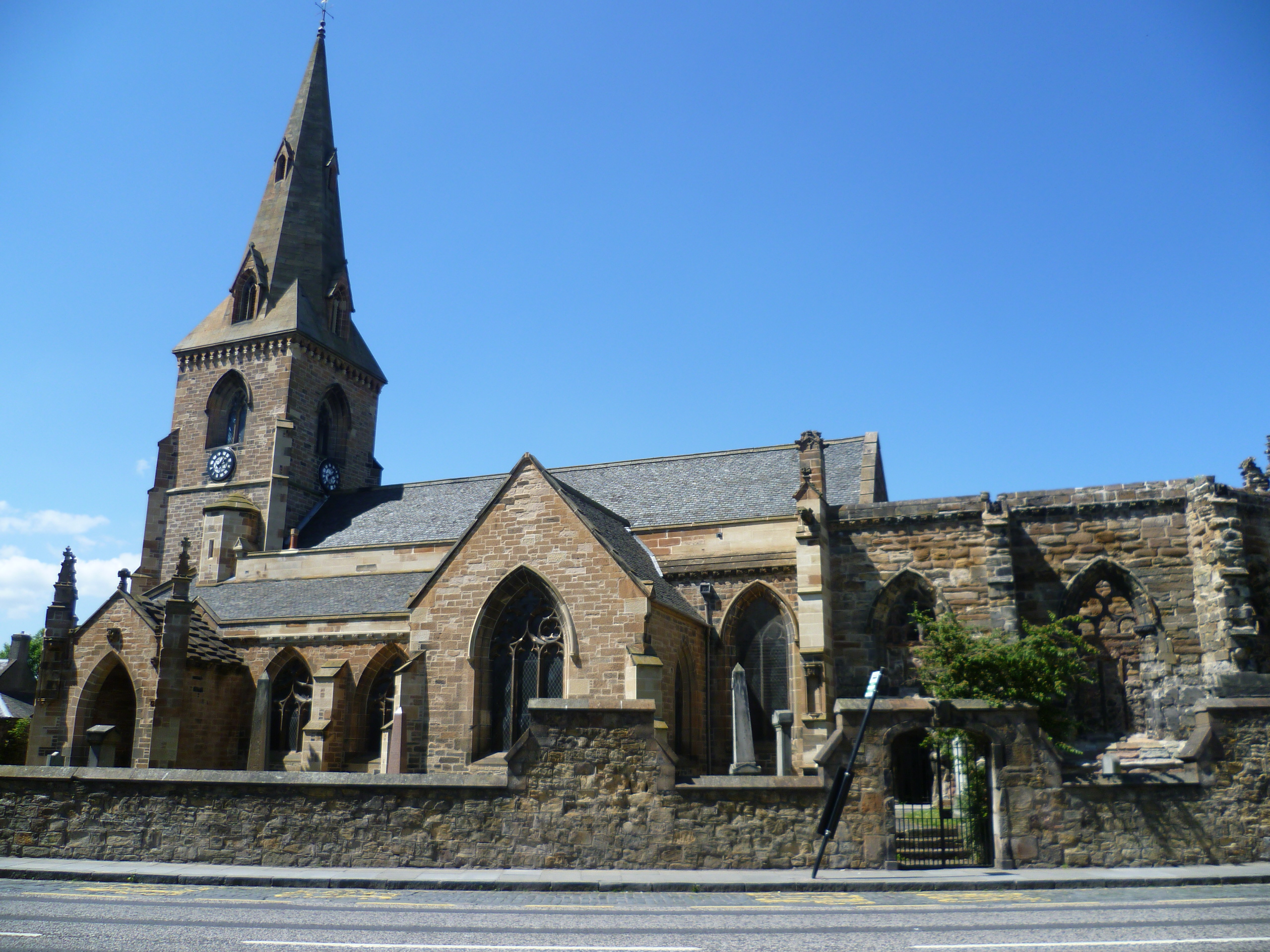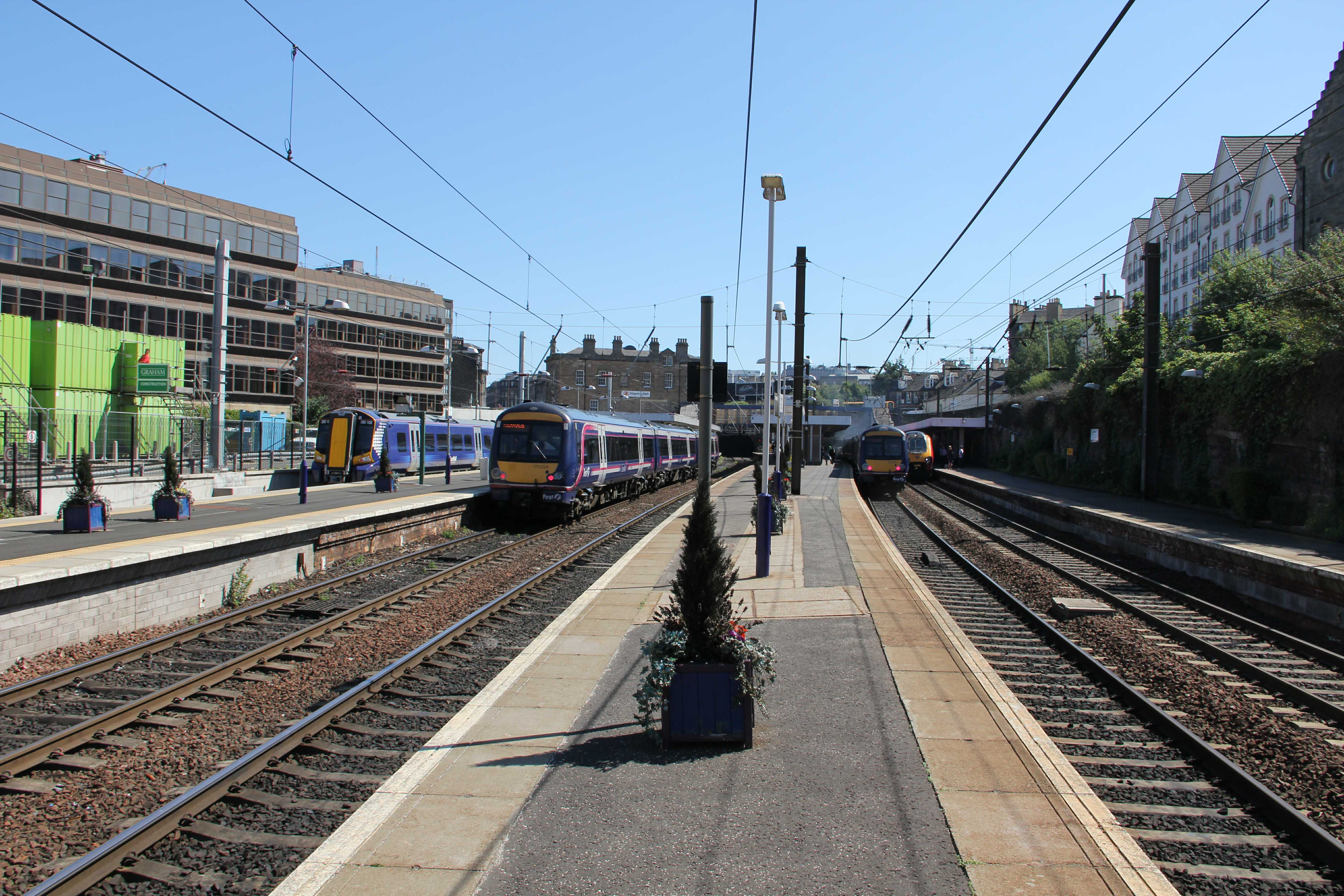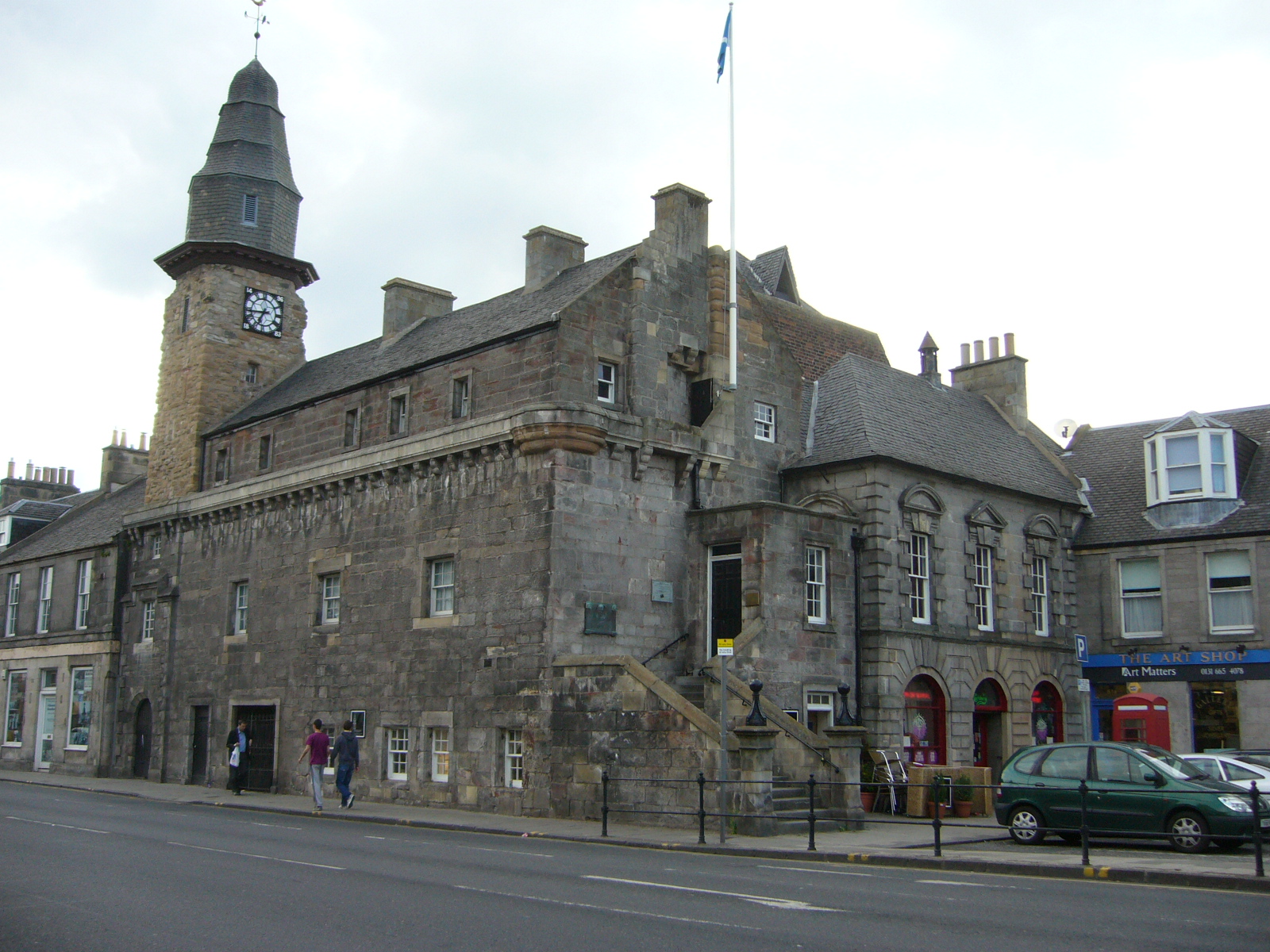|
North British Railway Main Line
The North British Railway was one of the two biggest of the five major Scottish railway companies prior to the 1923 Grouping. It was established in 1844, with the intention of linking with English railways at Berwick. The line opened in 1846, and from the outset the company followed a policy of expanding its geographical area, and competing with the Caledonian Railway in particular. In doing so it committed huge sums of money, and incurred shareholder disapproval that resulted in two chairmen leaving the company. Nonetheless, the company successfully reached Carlisle, where it later made a partnership with the Midland Railway. It also linked from Edinburgh to Perth and Dundee, but for many years the journey involved a ferry crossing of the Forth and the Tay. Eventually the North British built the Tay Bridge, but the structure collapsed as a train was crossing in high wind. The company survived the setback and opened a second Tay Bridge, followed soon by the Forth Bridge, whic ... [...More Info...] [...Related Items...] OR: [Wikipedia] [Google] [Baidu] |
London And North Eastern Railway
The London and North Eastern Railway (LNER) was the second largest (after London, Midland and Scottish Railway, LMS) of the "Big Four (British railway companies), Big Four" railway companies created by the Railways Act 1921 in Britain. It operated from 1 January 1923 until nationalisation on 1 January 1948. At that time, it was divided into the new British Railways' Eastern Region of British Railways, Eastern Region, North Eastern Region of British Railways, North Eastern Region, and partially the Scottish Region of British Railways, Scottish Region. History The company was the second largest created by the Railways Act 1921. The principal List of constituents of the London and North Eastern Railway, constituents of the LNER were: * Great Eastern Railway * Great Central Railway * Great Northern Railway (Great Britain), Great Northern Railway * Great North of Scotland Railway * Hull and Barnsley Railway * North British Railway * North Eastern Railway (UK), North Eastern Railw ... [...More Info...] [...Related Items...] OR: [Wikipedia] [Google] [Baidu] |
Hawick
Hawick ( ; ; ) is a town in the Scottish Borders council areas of Scotland, council area and counties of Scotland, historic county of Roxburghshire in the east Southern Uplands of Scotland. It is south-west of Jedburgh and south-south-east of Selkirk, Scottish Borders, Selkirk. It is one of the furthest towns from the sea in Scotland, in the heart of Teviotdale, and is the biggest town in Roxburghshire. The town is at the confluence of the Slitrig Water with the River Teviot. The town was formally established in the 16th century, but was previously the site of historic settlement going back hundreds of years. By the late 17th century, the town began to grow significantly, especially during the Industrial Revolution and Victorian era as a centre for the production of textiles, with a focus on knitting and weaving, involving materials such as tweed and cashmere. By the late 20th century, textile production had declined but the town remains an important regional centre for shopp ... [...More Info...] [...Related Items...] OR: [Wikipedia] [Google] [Baidu] |
Waverley Route
The Waverley Route was a railway line that ran south from Edinburgh, through Midlothian and the Scottish Borders, to Carlisle. The line was built by the North British Railway; the stretch from Edinburgh to Hawick opened in 1849 and the remainder to Carlisle opened in 1862. The line was nicknamed after the immensely popular Waverley Novels, written by Sir Walter Scott. The line was closed in 1969, as a result of the Beeching Report. Part of the line, from Edinburgh to Tweedbank, reopened in September 2015. The reopened railway is known as the Borders Railway. History Origins Edinburgh and Dalkeith Railway The North British Railway (NBR) was established on 4 July 1844 when an act of Parliament was passed giving authorisation for the construction of a line from Edinburgh to Berwick-upon-Tweed with a branch to Haddington. The company's chairman and founder was John Learmonth, the chairman of the Edinburgh and Glasgow Railway, whose ambition it was to enclose the triangl ... [...More Info...] [...Related Items...] OR: [Wikipedia] [Google] [Baidu] |
River South Esk
:''Note: the southern headwater of the River Esk in Lothian is also known as the South Esk.'' The South Esk () is a river in Angus, Scotland. It rises in the Grampian Mountains at Loch Esk in Glen Doll and flows through Glen Clova to Strathmore at Cortachy, 5 km north of Kirriemuir. Its course takes it past Brechin and enters the North Sea at Montrose. The river gives its name to the title of Earl of Southesk Earl of Southesk is a title in the Peerage of Scotland. It was created in 1633 for David Carnegie, 1st Earl of Southesk, Sir David Carnegie, an Extraordinary Lord of Session. He had already been created Lord Carnegie of Kinnaird in 1616 and was ..., held by the Carnegie family. References South Esk {{Scotland-river-stub ... [...More Info...] [...Related Items...] OR: [Wikipedia] [Google] [Baidu] |
Dalkeith
Dalkeith ( ; , ) is a town in Midlothian, Scotland, on the River Esk. It was granted a burgh of barony in 1401 and a burgh of regality in 1541. The settlement of Dalkeith grew southwestwards from its 12th-century castle (now Dalkeith Palace). Dalkeith has a population of 12,342 people according to the 2011 census. The town is divided into four distinct areas: Dalkeith proper with its town centre and historic core; Eskbank (considered to be the well-heeled neighbourhood of Dalkeith with many large Victorian and newer houses) to its west; Woodburn (primarily a working class council estate with pockets of new housing developments) to its east; and Newbattle (a semi-rural village with its abbey) to the south. Dalkeith is the main administrative centre for Midlothian. It is twinned with Jarnac, France. In 2004, Midlothian Council re-paved Jarnac Court in honour of Dalkeith and Jarnac's long standing link. On the north-eastern edge of Dalkeith at Woodburn is the Dalkeith Ca ... [...More Info...] [...Related Items...] OR: [Wikipedia] [Google] [Baidu] |
George Hudson
George Hudson (probably 10 March 1800 – 14 December 1871) was an English railway financier and politician who, because he controlled a significant part of the Railway Mania, railway network in the 1840s, became known as "The Railway King"—a title conferred on him by Sydney Smith in 1844. Hudson played a significant role in linking London to Edinburgh by rail, carrying out the first major merging of railway companies (the Midland Railway) and developing his home city of York into a major railway junction. He also represented Sunderland (UK Parliament constituency), Sunderland in the House of Commons of the United Kingdom, House of Commons. Hudson's success was built on dubious financial practices and he frequently paid shareholders out of capital rather than money the company had earned. Eventually in 1849, a series of enquiries, launched by the railways he was chairman of, exposed his methods, although many leading the enquiries had benefited from and approved of Hudson's m ... [...More Info...] [...Related Items...] OR: [Wikipedia] [Google] [Baidu] |
Edinburgh Waverley Railway Station
Edinburgh Waverley (also known simply as Edinburgh; ) is the principal railway station serving Edinburgh, Scotland. It is the second busiest station in Scotland, after Glasgow Central. The station serves as the northern terminus of the East Coast Main Line, from , although some trains operated by London North Eastern Railway continue to other Scottish destinations beyond Edinburgh. History Origins Edinburgh's Old Town, perched on a steep-sided sloping ridge, was bounded on the north by a valley in which the Nor Loch had been formed. In the 1750s overcrowding led to proposals to link across this valley to allow development to the north. The "noxious lake" was to be narrowed into "a canal of running water", with a bridge formed across the east end of the loch adjacent to the physic garden. This link was built from 1766 as the North Bridge and at the same time plans for the New Town began development to the north, with Princes Street to get unobstructed views south over slopi ... [...More Info...] [...Related Items...] OR: [Wikipedia] [Google] [Baidu] |
Haymarket (Edinburgh) Station
Haymarket railway station is the second largest railway station in Edinburgh, Scotland, after Edinburgh Waverley railway station, Waverley railway station. The station serves as a major commuter and long-distance destination, located near the city centre, in the West End, Edinburgh, West End. Trains from the station serve much of Scotland, including Fife and Glasgow, as well as suburban lines to the east, and the East Coast Main Line through to London King's Cross railway station, London King's Cross. It is the fifth busiest railway station in Scotland. History During 1842, Haymarket railway station was opened as the original terminal station, terminus of the Edinburgh and Glasgow Railway. The station represented the launch of a new age of travelling opportunities to the Scottish capital, being the first intercity route to be built and offering a previously unheard of journey time of two and a half hours between Scotland's two largest cities. Reportedly, early passenger numbers ... [...More Info...] [...Related Items...] OR: [Wikipedia] [Google] [Baidu] |
Queen Victoria
Victoria (Alexandrina Victoria; 24 May 1819 – 22 January 1901) was Queen of the United Kingdom of Great Britain and Ireland from 20 June 1837 until Death and state funeral of Queen Victoria, her death in January 1901. Her reign of 63 years and 216 days, which was List of monarchs in Britain by length of reign, longer than those of any of her predecessors, constituted the Victorian era. It was a period of industrial, political, scientific, and military change within the United Kingdom of Great Britain and Ireland, United Kingdom, and was marked by a great expansion of the British Empire. In 1876, the British parliament voted to grant her the additional title of Empress of India. Victoria was the daughter of Prince Edward, Duke of Kent and Strathearn (the fourth son of King George III), and Princess Victoria of Saxe-Coburg-Saalfeld. After the deaths of her father and grandfather in 1820, she was Kensington System, raised under close supervision by her mother and her Comptrol ... [...More Info...] [...Related Items...] OR: [Wikipedia] [Google] [Baidu] |
River Tyne
The River Tyne is a river in North East England. Its length (excluding tributaries) is . It is formed by the North Tyne and the South Tyne, which converge at Warden, Northumberland, Warden near Hexham in Northumberland at a place dubbed 'The Meeting of the Waters'. The Tyne Rivers Trust measure the whole Tyne Drainage basin, catchment as , containing of waterways. Course North Tyne The Ordnance Survey records 'the source of the North Tyne river' at grid reference NY 605974 at Deadwater, a few tens of metres short of the Scottish border. It flows southeast through the village of Kielder before entering first Bakethin Reservoir and then Kielder Water, both set within Kielder Forest. It then passes by the village of Bellingham, Northumberland, Bellingham before the River Rede enters as a left-bank tributary at Redesmouth. It passes Hadrian's Wall near Chollerford before joining the South Tyne near Warden to the northwest of Hexham. South Tyne The South Tyne rises at Tyne ... [...More Info...] [...Related Items...] OR: [Wikipedia] [Google] [Baidu] |
River Tweed
The River Tweed, or Tweed Water, is a river long that flows east across the Border region in Scotland and northern England. Tweed cloth derives its name from its association with the River Tweed. The Tweed is one of the great salmon rivers of Britain and the only river in England where an Environment Agency rod licence is not required for angling. The river generates a large income for the local borders region, attracting anglers from all around the world. Etymology ''Tweed'' may represent an Old Brittonic name meaning "border". A doubtful proposal is that the name is derived from a non-Celtic form of the Indo-European root ''*teuha-'' meaning "swell, grow powerful". Course The River Tweed flows primarily through the scenic Borders region of Scotland. Eastwards from the settlements on opposing banks of Birgham and Carham it forms the historic boundary between Scotland and England. It rises in the Lowther Hills at Tweed's Well near the rising points of the Clyde -- ... [...More Info...] [...Related Items...] OR: [Wikipedia] [Google] [Baidu] |
Musselburgh
Musselburgh (; ; ) is the largest settlement in East Lothian, Scotland, on the coast of the Firth of Forth, east of Edinburgh city centre. It had a population of as of . History The name Musselburgh is Old English language, Old English in origin, with ''mussel'' referring to Mussel, the shellfish.Musselburgh was famous for the mussel beds which grew in the Firth of Forth; after many years of claims that the mussels were unsafe for consumption, a movement has been started to reestablish the mussel beds as a commercial venture. The ''burgh'' element appears to derive from burh, in the same way as Edinburgh, before the introduction of formal burghs by David I of Scotland, David I. Its earliest Anglic name was ''Eskmuthe'' (Eskmouth) for its location at the mouth of the River Esk, Lothian, River Esk. Musselburgh was first settled by the Roman Britain, Romans in the years following their invasion of Scotland in 80 AD. They built a Inveresk Roman Fort, fort a little inland f ... [...More Info...] [...Related Items...] OR: [Wikipedia] [Google] [Baidu] |










